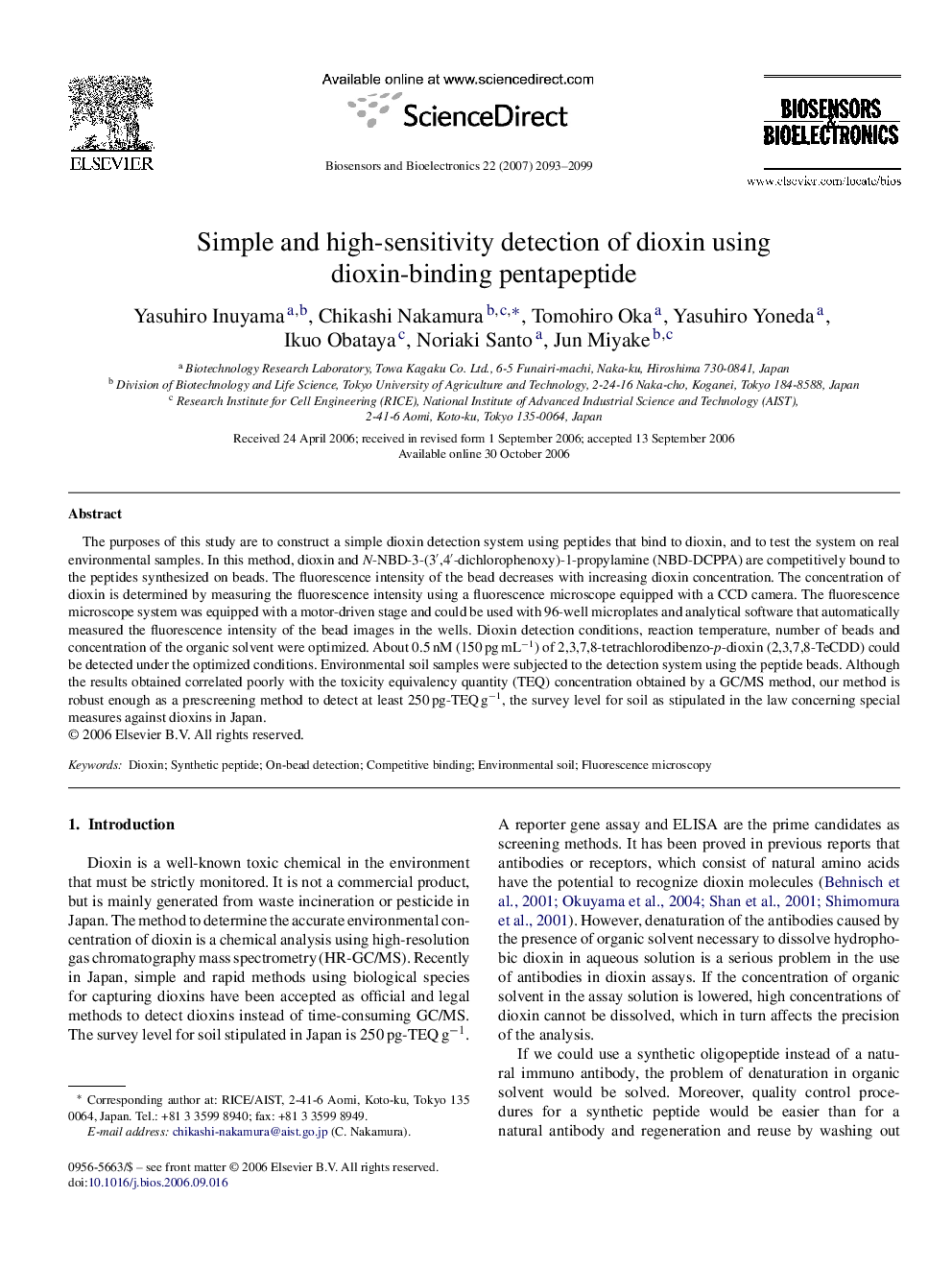| Article ID | Journal | Published Year | Pages | File Type |
|---|---|---|---|---|
| 870311 | Biosensors and Bioelectronics | 2007 | 7 Pages |
The purposes of this study are to construct a simple dioxin detection system using peptides that bind to dioxin, and to test the system on real environmental samples. In this method, dioxin and N-NBD-3-(3′,4′-dichlorophenoxy)-1-propylamine (NBD-DCPPA) are competitively bound to the peptides synthesized on beads. The fluorescence intensity of the bead decreases with increasing dioxin concentration. The concentration of dioxin is determined by measuring the fluorescence intensity using a fluorescence microscope equipped with a CCD camera. The fluorescence microscope system was equipped with a motor-driven stage and could be used with 96-well microplates and analytical software that automatically measured the fluorescence intensity of the bead images in the wells. Dioxin detection conditions, reaction temperature, number of beads and concentration of the organic solvent were optimized. About 0.5 nM (150 pg mL−1) of 2,3,7,8-tetrachlorodibenzo-p-dioxin (2,3,7,8-TeCDD) could be detected under the optimized conditions. Environmental soil samples were subjected to the detection system using the peptide beads. Although the results obtained correlated poorly with the toxicity equivalency quantity (TEQ) concentration obtained by a GC/MS method, our method is robust enough as a prescreening method to detect at least 250 pg-TEQ g−1, the survey level for soil as stipulated in the law concerning special measures against dioxins in Japan.
